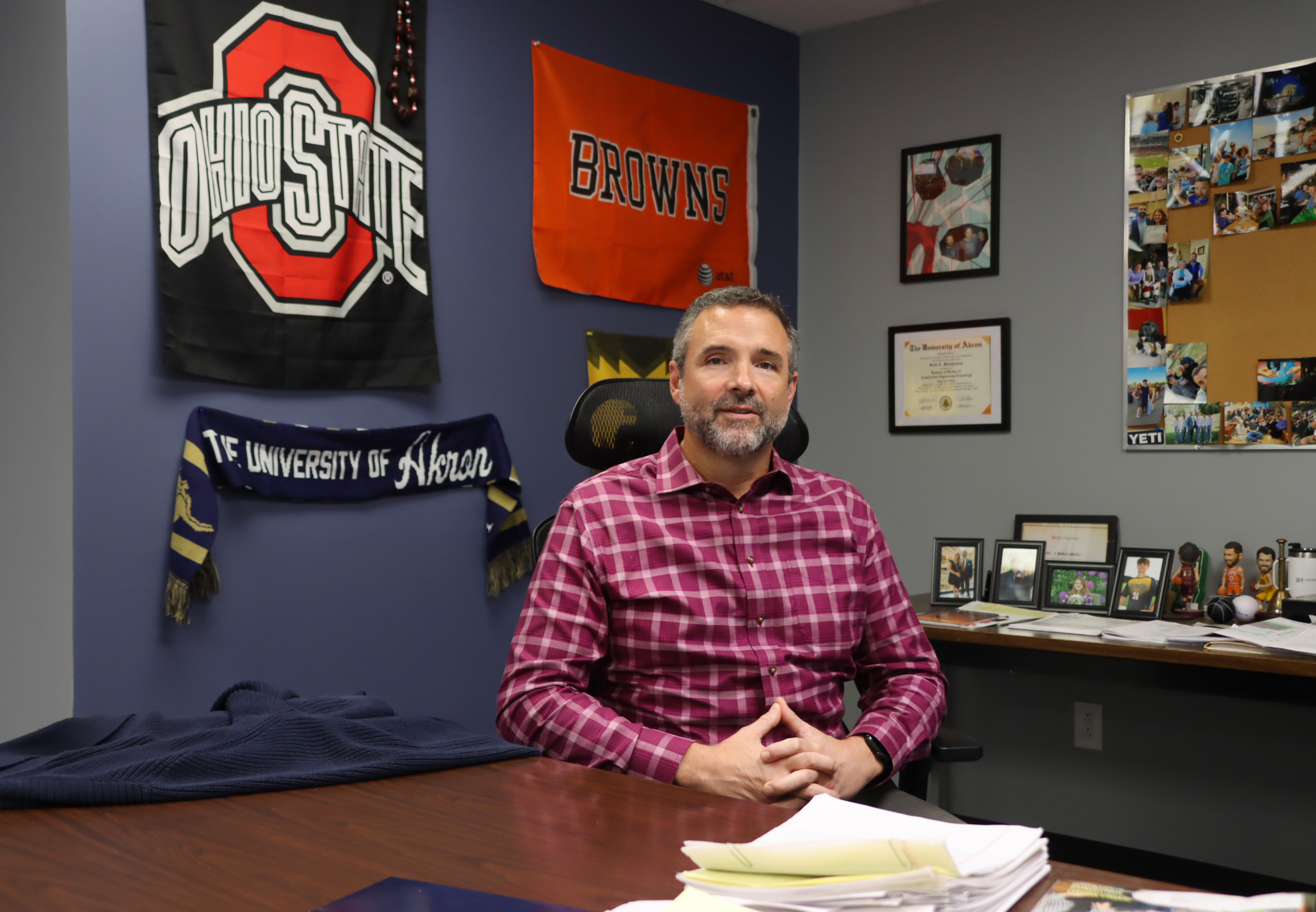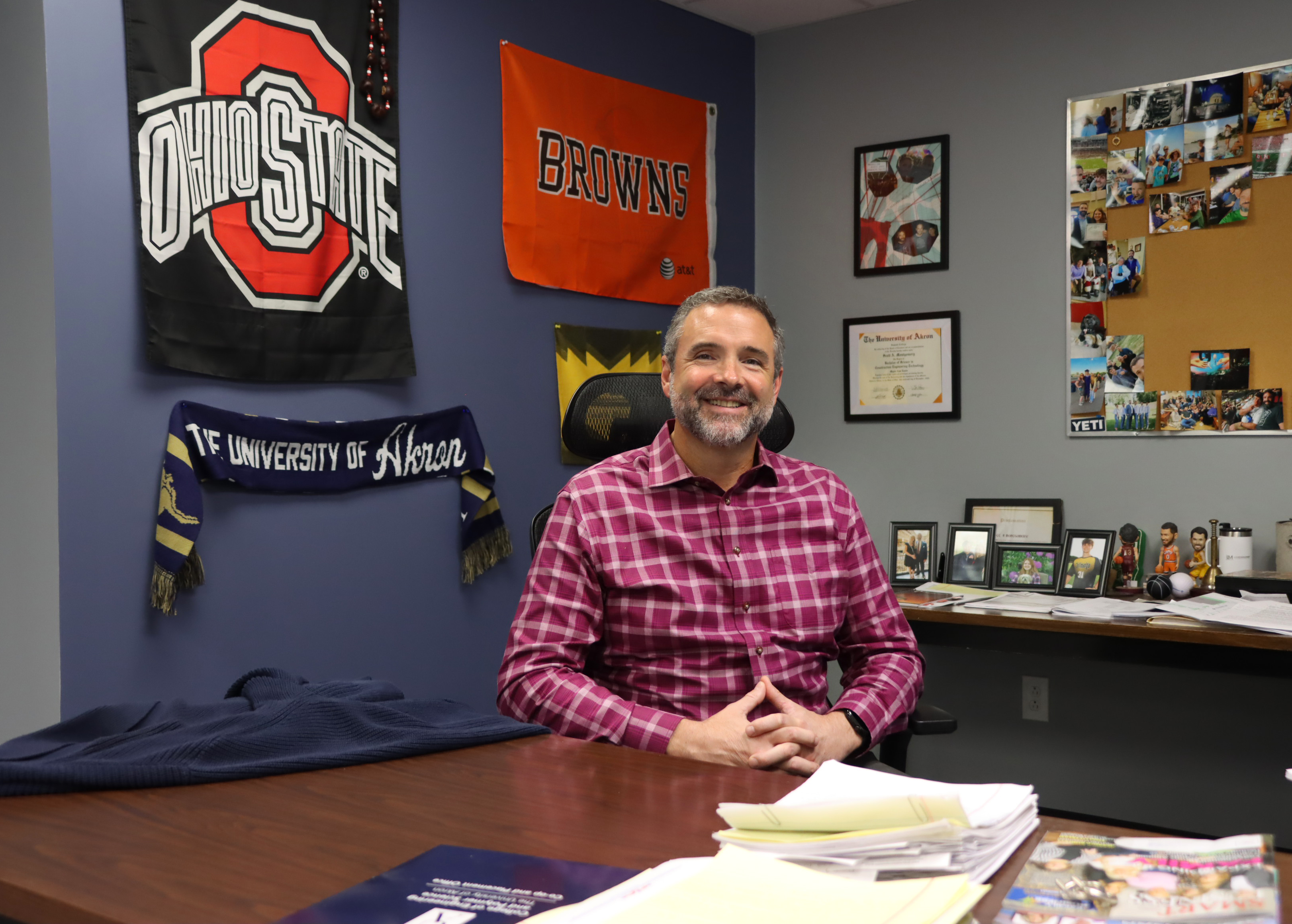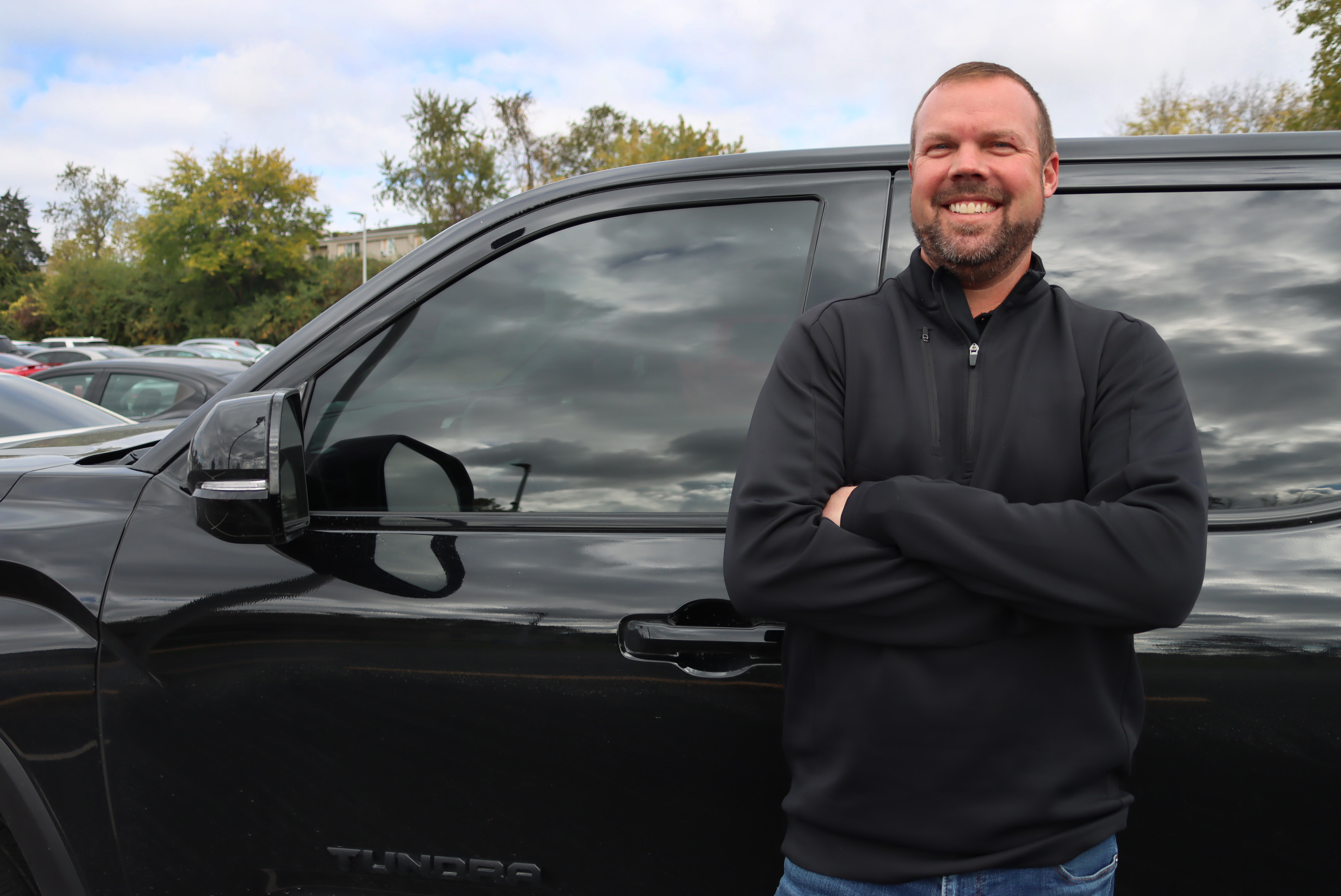Akron, Ohio
A business is nothing without its employees; they're the greatest linchpin, constantly adapting and implementing industry best trends and practices to make their company competitively viable. However, an employees' purpose is not so direct—it's far more personal and unique. No matter how big or how small, seasoned or recently hired, every department, team, and individual contributes to the company and each has their unique method of operating. Every Summit Construction employee has a unique story to tell—how they operate, why they came to Summit, what motivates them, and what they wish others knew.
In the AEC industry, October is recognized as the Careers in Construction Month. Over the next four weeks, we will be sharing the stories of eight employees from four different careers paths in the world of construction. On week 4, we present: Working in Leadership.

When Scott Montgomery was searching for a position in the construction industry, preconstruction was an unexplored path, "I wanted to be in residential construction," said Montgomery. "And I was so busy at the time. I was going to night classes, working full time, married, and had a family, and I had to change my career trajectory a couple of times, but I found something that worked for me: commercial construction."
"I went to a career fair at the University of Akron, where I was going to school at the time, and I found Summit Construction. I found the co-op position very interesting, and I ended up applying and getting hired within the preconstruction department."
As Montgomery worked as a co-op, he learned more than just industry skills, "When I was first starting, Lou Ciraldo (Founder of Summit Construction and President at the time), taught me that a title only means so much. For example, my official title is Director of Construction, but I am not limited to just preconstruction tasks. I need to be flexible. I need to be able to be universal, and help solve tasks outside of preconstruction if I need to."
"When I was starting, I was taught that Summit Construction did not want to be a corporate culture," said Montgomery. "We wanted to be more than just co-workers; we wanted to be proud of those we work with. And, truthfully, that is the culture that brought me back to Summit. Knowing what the culture is like and it has friendly personalities, which made the decision a no brainer."
An essential function
"My primary function is to oversee the preconstruction efforts," said Montgomery. "That can mean a lot of different things on a lot of different days, but, ultimately, when a client comes with a project or we become aware of a project that we want to participate in, we make sure we add the 'Summit Touch' to the project. This can also mean a lot of different things, but it essentially means how we interact with the client, how we handle communications, and how we implement our services—like estimating. These are all done during preconstruction phase."
Montgomery continues by expressing the importance of those working alongside him. "Keith and Pete are essential to preconstruction; they're estimators, and I could not do my job without them. They make sure cost adding is accurate, our understanding of the technical detail and specs are accurate, and they make sure our interpretation of the project is correct. Essentially, they make sure we have an execution strategy, then we send said strategy to the client."
Estimating is only one step in pursuing new work, and for Montgomery, his role in acquiring new projects begins during the proposal process. "My role focuses more on the construction management side, especially when we are trying to display our qualifications for a project and its client. So, for step one, we give them our background, previous projects and capabilities, which helps set us apart from other companies bidding on the project. This is reflected in the Request for Qualifications and the Request for Proposals that we make for our clients."
"After this, if we are selected, this is where preconstruction really kicks in: we start to meet with the client and the architect, and really try to figure out what each parties' needs are and how we can execute them. The process becomes very collaborative because there are three parties—owner, architect, and construction—each trying to implement their needs."

Striving for something better
Challenges come and go in preconstruction, and they are not all the same, but there is one that sticks out to Montgomery in particular, "Currently, predicting the market is difficult: demand for work is high and costs/business expenses are high. So, it can be hard to forecast costs when, possibly, the project might incur more costs because of the fluctuating market. Also, there is need for young workers in the industry, but they're are fewer and fewer."
"One a more day-to-day level, maintaining relationships is also hard. There are so many people I interact with. Executing a construction project takes a lot of work and lot of parties—all the way from trades to CEOs—and finding a way to maintain a high-level relationship with everyone is essential to me and to Summit. I feels as if it's important to understand everyone is critical within the project, and realizing the humanity in that is very important."
Montgomery continues, "Diligence, communication, and understanding are critical attributes for being in preconstruction. As I mentioned before, typically I interact with many parties, and, as a result, I work with many different types of people who have different economic, religious, and political backgrounds, etc. So, no matter what, I strive to treat people with respect and dignity."

Leadership roles in construction can emerge from many paths —engineering, construction, finance, business, and more. Each path focuses on their own particular niche, contributing to the overall success of the firm. For Adam Huwer, Director of Operations, having a grasp on the overall functionality and performance of the projects and the team is key. "I oversee all the resources, workflow, probability, and employee of Summit Construction," said Huwer.
In order for Huwer to create an efficient environment, he has to collaborate with most departments within Summit, "I oversee all of our operations and all of our projects, and one project typically involves all the company. And, most of the time, this leads to challenges, but overtime we have learned to solve those challenges. However, sometimes they can lead to challenges we can not predict. So, I try to handle them with a team based approach on what is best for the project and Summit."
More to the job
A leadership role comes with many responsibilities—overseeing multiple teams, excellent communication, vast industry experience, and project management skills, etc.—and leaders develop these skills for their teammates and greater community. In Huwer's case, it's no different. "There are school districts and clients relying on us to bring our best every day," said Huwer. "Many of our employees leave their house by 5:30 a.m. and get their projects started."
"Also, getting our guys together to work on projects for the less fortunate. I enjoy watching our people come together and help those in need. The bond they form and the universal goal they work towards is incredible."
Huwer, who has been working with Summit for the past 18 years, and served as a leader for most of that the time, expresses his appreciation for being a part of an environment that promotes community development, a positive work environment, and quality work. "I have had a front row seat to the evaluation of Summit, and seeing it grow into the company that it is today has been amazing."

